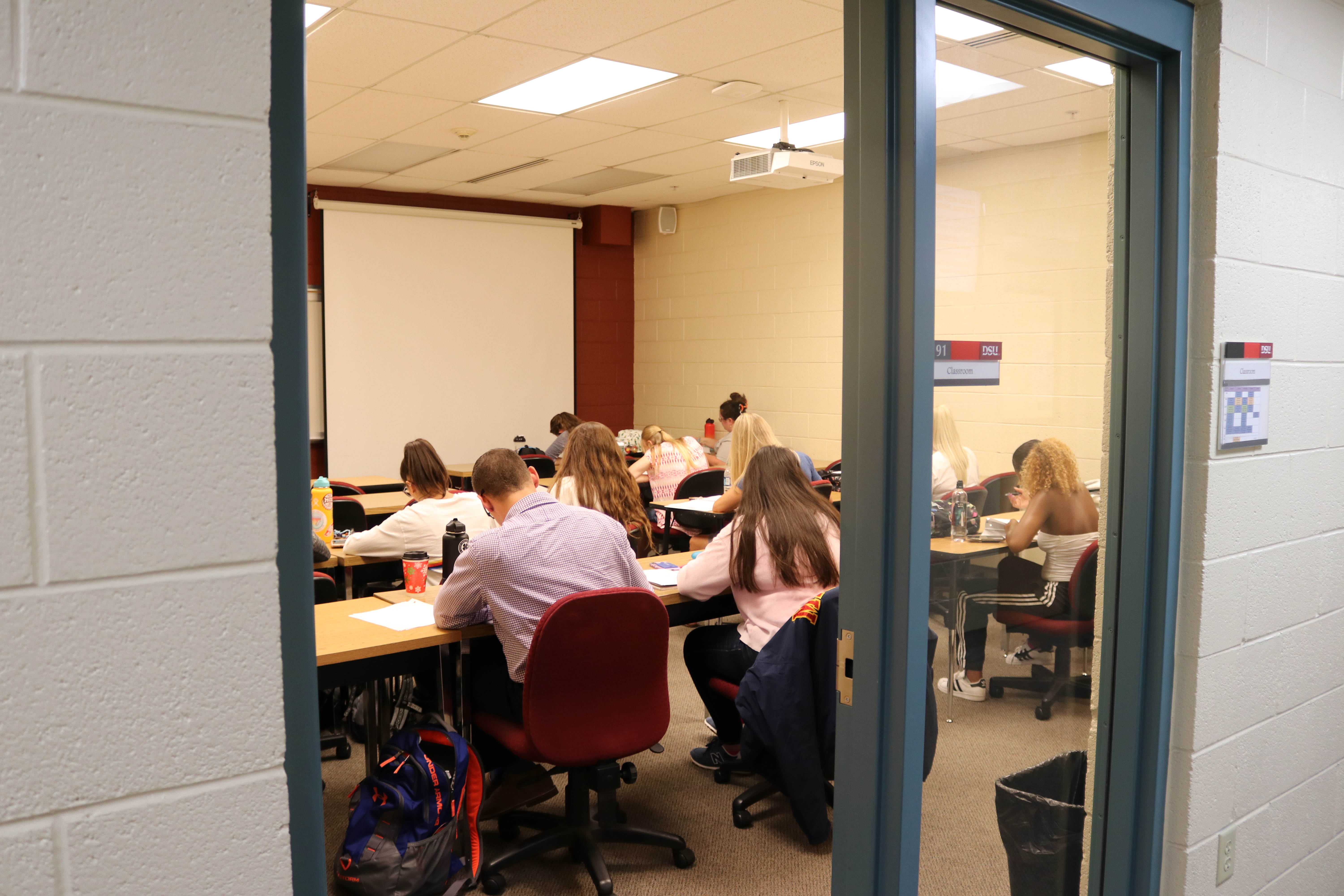
Photo by Madison Anderson.
Students can expect a change in their class sizes due to Dixie State University’s considerable growth.
Provost Michael Lacourse, also vice president of academic affairs, said changing class sizes may help DSU use their resources more effectively and help grow the university.
One way to do this, Lacourse said, is to “better align scheduling patterns, classroom assignments and class sizes.” This will also provide students with the best access to classes, Lacourse said.
However, Lacourse said building the capacity and support for growth in academics takes time and that gathering resources is not always easy to do.
Brenda Sabey, dean of the college of education, said making the schedule for classes is determined by data from years past and matching classrooms with the size of enrollment for a class so space doesn’t go unused.
Lacourse said DSU has invested in a database to store the school’s information and help determine proper class size. Kyle Wells, dean of the college of business and communication, said the database is young but will help the school to become better. DSU has records of class enrollment with the past years’ data saved and easily accessible for them, Wells said.
After taking into consideration the numbers from past data, the faculty of the college of education look at the possible impact of the schedule on current students to make sure they can provide the best schedule for as many students as possible, Sabey said.
Wells said he worked with a team of people to come up with a schedule that holds classes between 9 a.m. and noon and then worked on having the same class at a different time for students.
Sabey said the university’s first priority is always the quality of classes.
“One factor in ensuring quality is often the quantity of students,” Sabey said. “At other universities, it is not uncommon to have classes that have hundreds of students with one professor and a teaching assistant.”
DSU is different because it is a student-centered educational experience, Sabey said.
Jeff Jarvis, dean of the college of arts and sciences, said the faculty in his college are working together to define what optimal class sizes are.
However, since the college has more non-traditional classrooms, it’s harder to evaluate how many students may be in one class, Jarvis said. Some classes can’t add more students because of the amount of equipment needed for a class, he said. For example, the piano class can only have a number of students equal to the amount of pianos that fit in the room, Jarvis said.
Lacourse, Jarvis and Wells said another main goal is to make school affordable to students.
“With the significant growth of students and programs, without a significant increase in funding,” Sabey said, “we have been working hard to use our resources as carefully as we can, to provide the best possible experience for our students.”
Jarvis said it is harder to be efficient with offering classes for new programs. Since the programs are just starting, the department is heavily recruiting to find students to join the program, he said.
“Another piece of [scheduling] is trying to be efficient and trying to maintain high quality and trying to make sure the courses are offered for the students to graduate,” Jarvis said. “The advisers are really important in this.”
The advisers help department chairs predict what classes to offer for students, Jarvis said.
Sabey said the faculty of the college of education try very hard not to make decisions that would delay any student’s class requirements for graduation.
Wells said he and his team have been working on the schedule for several weeks, and it took three full days to finish making the schedule in the college of business and communication.
